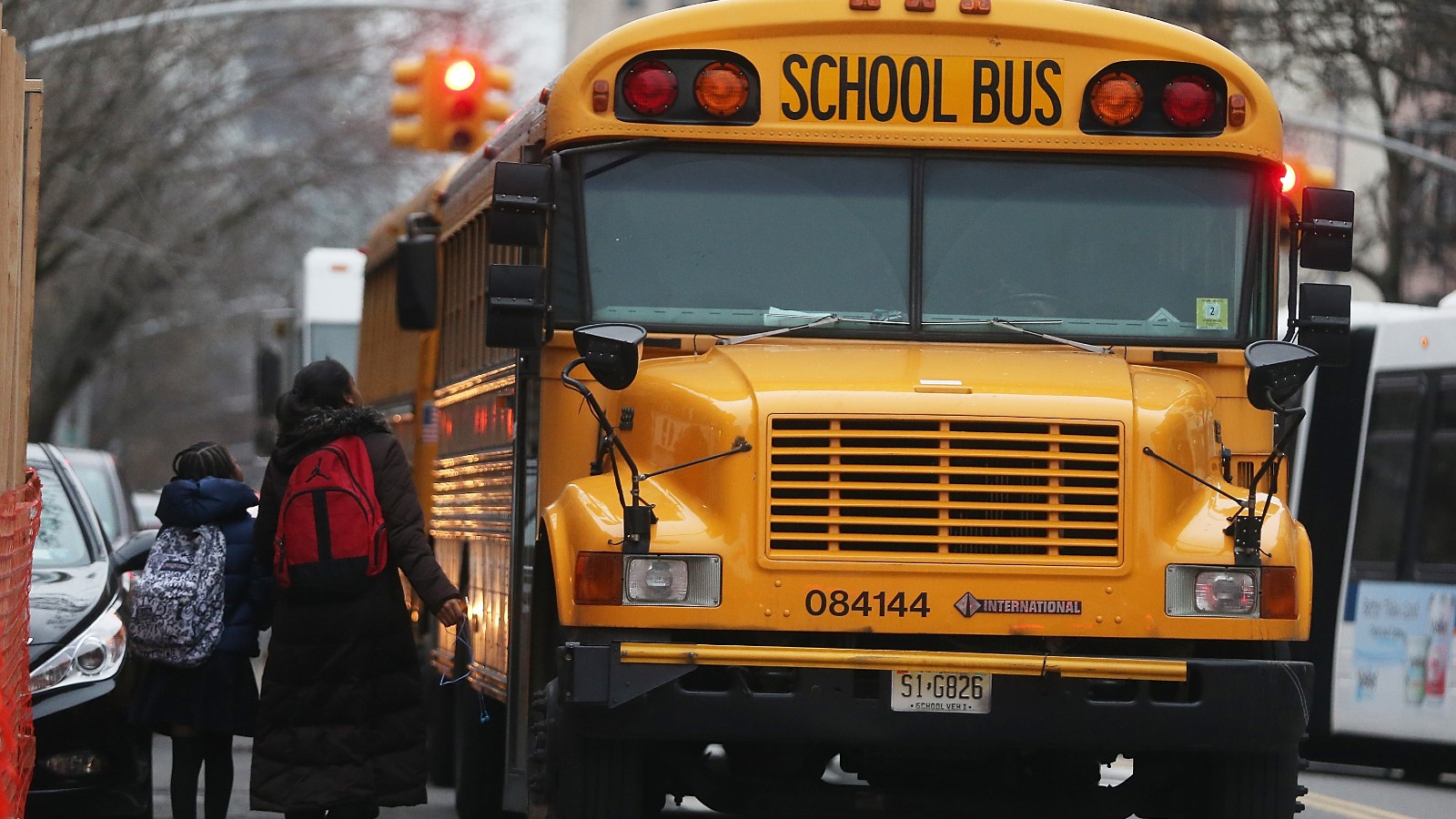Every day, more than 20 million kids ride to school on the 450,000 or so buses that trundle through cities and towns across the country. More than 90 percent of those vehicles run on diesel fuel, which emits harmful pollutants like fine particulates, ozone-forming substances like nitrogen oxide, and cancer-causing chemicals like benzene. They also spew a whole lot of greenhouse gases.
The Biden administration wants to do something about that. On Monday, it announced the latest tranche of funding to make America’s yellow buses more green. The Environmental Protection Agency awarded nearly $1 billion in grants to 280 school districts to help them go electric.
The allocations mark the third round of funding for clean school buses released under the 2021 bipartisan infrastructure law. The money will purchase more than 2,700 vehicles to shuttle 7 million students in 37 states. Notably, 86 percent of the cash will go to low-income, rural, or tribal communities. School officials and public health advocates say it’s an important step toward reducing the impacts of diesel pollution — a burden disproportionately experienced by children of color and those in low-income areas.
“Clean air is not just an environmental issue. It’s a matter of public health and educational equity,” Devon Horton, superintendent of the DeKalb County School District in Georgia, told a cheering crowd at Stone Mountain Middle School on Monday.
Diesel pollutants burrow into the lungs, causing inflammation, asthma, and a host of other respiratory illnesses. Children are especially impacted because their respiratory systems are still developing, said Anne Kelsey Lamb, director of the Regional Asthma Management and Prevention Program at the Public Health Institute. Kids also have faster breathing rates than adults, Lamb added, which means they inhale even more toxic fumes.
Researchers have long documented the effects of diesel exhaust from school buses. More than 20 years ago, a study by the Natural Resources Defense Council and the University of California, Berkeley found that the level of exhaust inside the vehicles reached 23 to 46 times the amount the Environmental Protection Agency said would pose a significant risk of cancer. Another study, by researchers at the University of Connecticut, found a level of fine particulate matter inside school buses five to 15 times higher than those found outside. Such risks are compounded by the amount of time students spend on buses: A 30-minute ride to and from school every day amounts to 180 hours each year.
The effects on children of color and low-income students are especially profound. Sixty percent of low-income students ride the bus to school, compared to 45 percent of students from higher income households. Rates of asthma, which is exacerbated by diesel pollution, also are significantly higher among people of color.
Such exposure compounds the pollution burdens society has long placed on frontline communities. As a result of racist housing, investment, and energy-siting practices, people of color disproportionately live near major sources of pollution like highways, bus depots, power plants, and refineries. A study from the University of Washington found that regardless of income, people of color are exposed to higher levels of air pollution from nearly all emission sources. Researchers at Harvard University reported that people of color and low-income populations are also disproportionately exposed to fine particulate matter.
“Air pollution has a cumulative effect, where the more sources of air pollution that children are exposed to, the greater the health impacts are going to be,” said Lamb.
Beyond producing no tailpipe emissions, electric buses are more efficient and have fewer moving parts, which could save school districts money on maintenance costs. But they do cost three to four times more than diesels, with an average price of $350,000 to $450,000. While 1,285 school buses across the country are now electric — with many more on the way due to recent federal and state efforts — zero-emissions models remain out of reach for many districts.
In Nevada, this week’s funding is helping school districts make the switch. The state received nearly $8 million to purchase 25 electric buses in a partnership with the Nevada Clean Energy Fund, a nonprofit that applied for the EPA grant on behalf of five school districts.
Kirsten Stasio, the nonprofit’s CEO, said the money will not only let students experience commutes free of diesel exhaust, but “the people who live along the bus routes will experience reduced exposure to harmful air pollutants as well.”
Greg Zegas, director of investments at the fund, told Grist that with the new federal grant, local utility incentives, and support from the state’s Division of Environmental Protection, schools could see the upfront costs of electric buses covered.
“We’re able to stack different pieces of funding together that allow the school districts to get the buses at no cost to them,” Zegas said. “When the school districts hear that, they’re definitely interested.” The group is also helping schools access federal clean vehicle tax credits available under the Inflation Reduction Act.
As an added bonus, electric school buses could also help improve reliability of the power grid. Nevada Clean Energy Fund is working closely with schools and the utility NV Energy to join a bus-to-grid trial. Under the program, the utility would pay for and install bus-charging infrastructure that allows school buses to send electricity to the grid when they’re not in use.
“It’s a really unique statewide approach of knitting together all these different funding sources,” Zegas said. The group is currently reaching out to schools to start ordering buses, and plans to get the vehicles on the road within three years as required under the grant.




